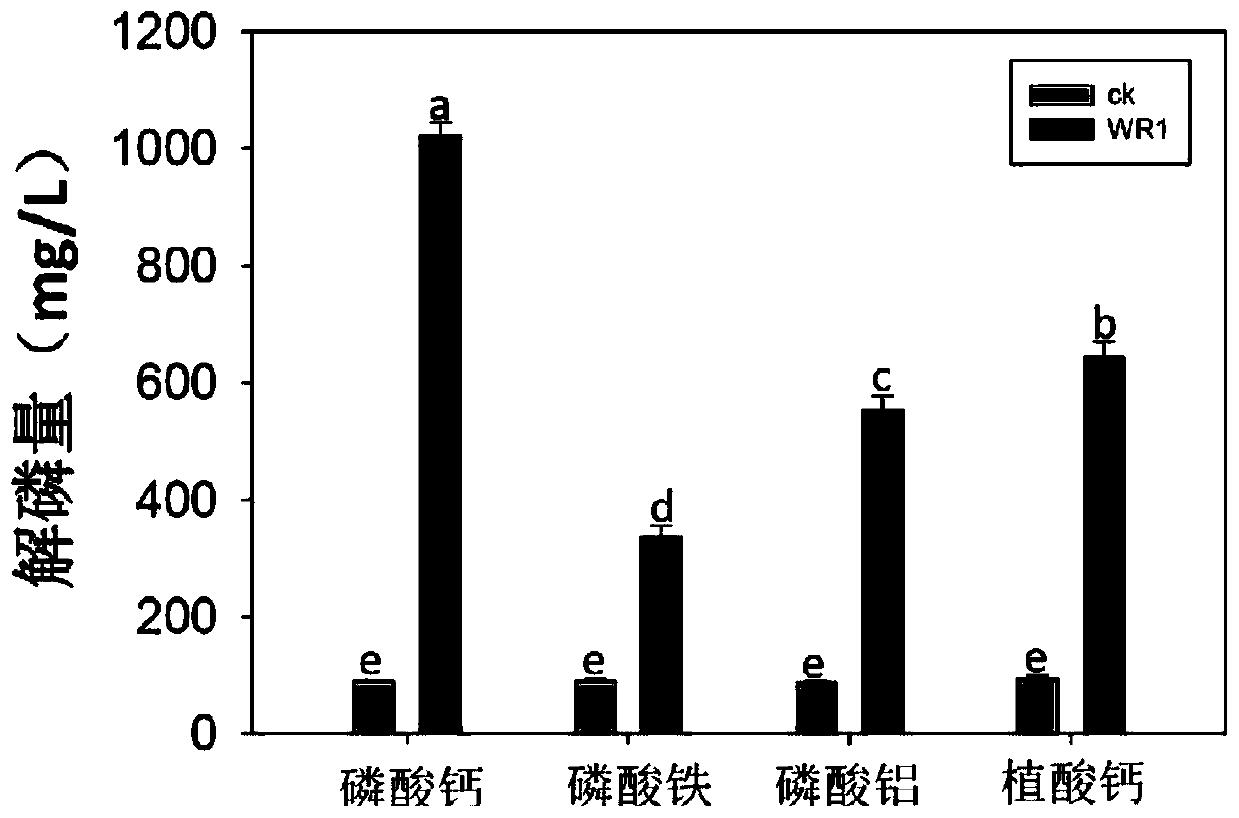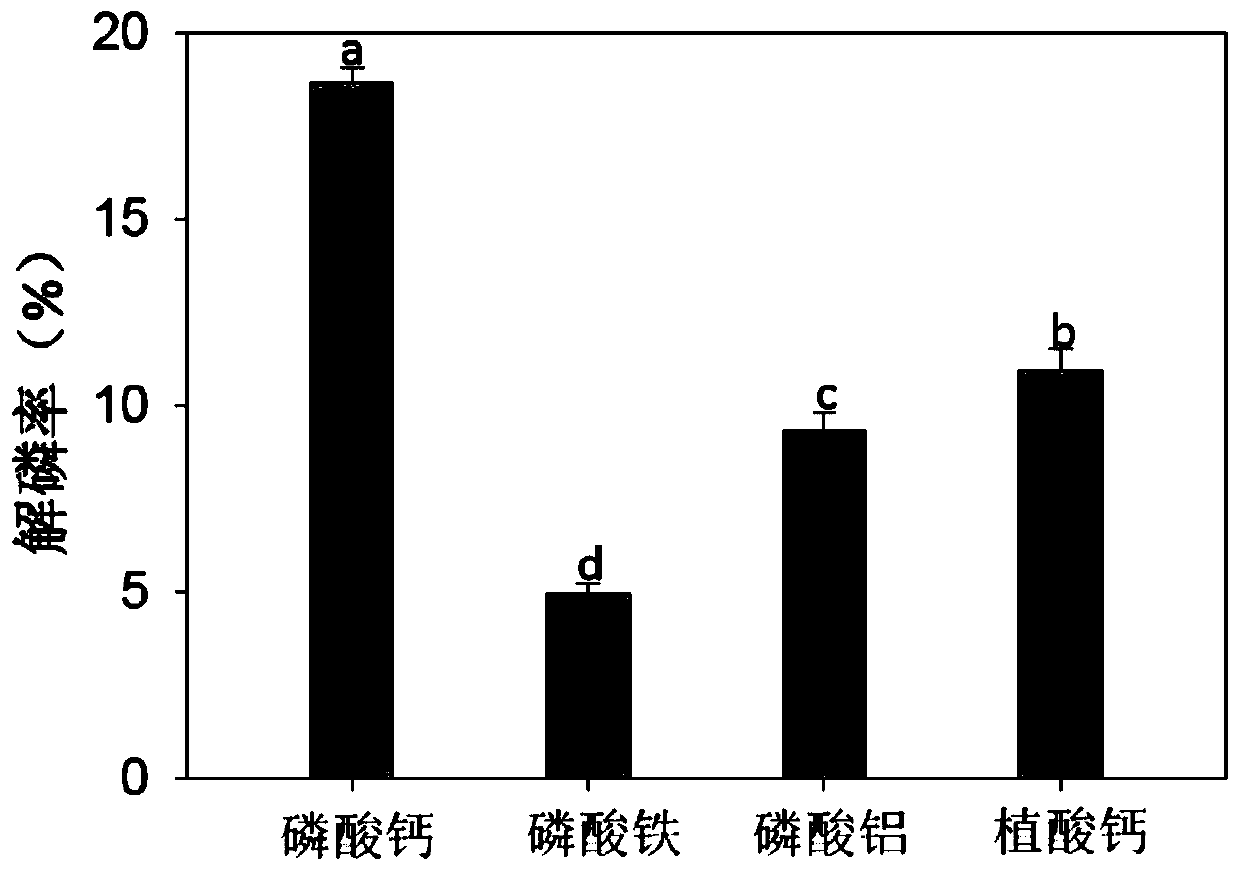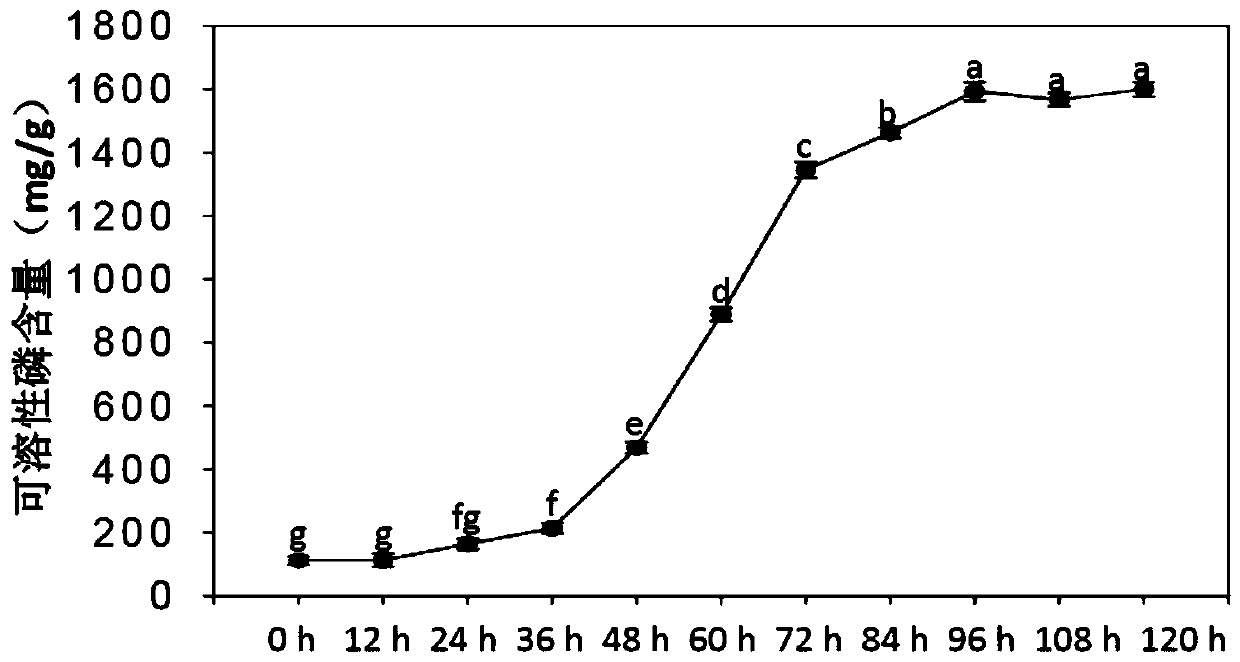A Phosphate-Solubilizing Mycorrhizal Fungus and Its Application in Promoting Blueberry Growth
A technology of phosphate-solubilizing bacteria and fungi, applied in the field of microorganisms
- Summary
- Abstract
- Description
- Claims
- Application Information
AI Technical Summary
Problems solved by technology
Method used
Image
Examples
Embodiment 1
[0024] Isolation, purification and screening of phosphorus-solubilizing endophytic fungi from blueberry roots, the steps are as follows:
[0025] 1. Collect wild blueberry roots with soil samples in the Greater Khingan Mountains area, wash the blueberry root sections with clear water, and then transfer them to an ultra-clean workbench for the following operations: soak the root sections in 10% (mass ratio) hydrogen peroxide for 8 minutes, During this period, use sterile tweezers to gently turn it several times to ensure thorough disinfection; after rinsing with sterile water for 2-3 times, transfer it to 6% (mass ratio) sodium hypochlorite, soak for 15 minutes, and rinse with sterile water twice; Blot off any remaining liquid on the root surface. The sterilized root segments were cut into 0.5 cm long root segments with sterile scissors, inserted into the prepared PDA plate, and cultured upside down in the dark in a constant temperature incubator at 25-30°C. Recipe for PDA pla...
Embodiment 2
[0029] Phosphorus dissolving ability test of WR1 strain, the steps are as follows:
[0030] 1. To detect the degradation of inorganic phosphorus and organic phosphorus by strain WR1. After the above primary screening, a strain was obtained, named WR1, and its d / D was 1.02. On the ultra-clean workbench, use a puncher to inoculate 5 mm of WR1 bacteria block into the Erlenmeyer flasks containing 100 mL of inorganic phosphorus and organic phosphorus liquid medium. All treatments were replicated 3 times with the inoculated sterile PDA medium block as the control. After culturing for 7 days, the hyphae were filtered out, and the OD value in the supernatant was measured by the molybdenum antimony anti-colorimetric method, and the available phosphorus content and phosphorus solubilization rate in the supernatant were calculated. Among them, phosphorus dissolving rate (%)=(inoculation soluble phosphorus content-control soluble phosphorus content) / amount of phosphate added×100. There...
Embodiment 3
[0033] Morphological and molecular biological identification of strain WR1, the steps are as follows:
[0034] 1. Pick the above-mentioned preserved purified strains, inoculate them on PDA plates, and cultivate and activate them in a constant temperature incubator at 28°C for 1-2 weeks. Use a sterile puncher with a diameter of 0.5 cm to take the bacteria cake from the outermost layer of the colony, inoculate it on a new PDA plate, and culture it in a constant temperature incubator at 28°C for 1 week to observe the shape of the colony. Figure 5 It shows that the colony is off-white, fluffy, with dense hyphae, the middle of the colony is raised, and there are radial cracks, and the back of the colony is dark yellow.
[0035] 2. Use an inoculation needle to pick a small amount of purified single-colony hyphae, put it on a glass slide with a drop of normal saline to make a temporary mount, and observe the hyphae structure of the endophytic fungus under a microscope. Figure 6 I...
PUM
| Property | Measurement | Unit |
|---|---|---|
| diameter | aaaaa | aaaaa |
Abstract
Description
Claims
Application Information
 Login to View More
Login to View More - R&D
- Intellectual Property
- Life Sciences
- Materials
- Tech Scout
- Unparalleled Data Quality
- Higher Quality Content
- 60% Fewer Hallucinations
Browse by: Latest US Patents, China's latest patents, Technical Efficacy Thesaurus, Application Domain, Technology Topic, Popular Technical Reports.
© 2025 PatSnap. All rights reserved.Legal|Privacy policy|Modern Slavery Act Transparency Statement|Sitemap|About US| Contact US: help@patsnap.com



